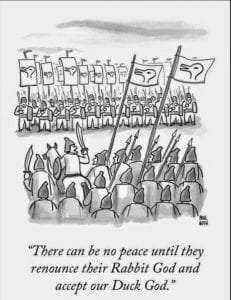It’s not easy to limit speech wisely–you need a LAAP that fits your venue and goals. But it’s even harder to impose consequences for “crebit” (speech that violates the LAAP), while still doing so in a moral way (as laid out in The MAP), because while we limit speech, we punish people. Today’s example in the news:
Facebook and Trump are at a turning point in their long, tortured relationship
On Jan. 6, as an angry mob stormed the U.S. Capitol, President Donald Trump posted on Facebook that his supporters should “remember this day forever.”
“These are the things and events that happen when a sacred landslide election victory is so unceremoniously & viciously stripped away from great patriots who have been badly & unfairly treated for so long,” he said in a post.
In response, Facebook did something it had resisted for years: banned Trump’s account indefinitely for inciting violence. Twitter, YouTube and others followed suit.The ban is that culmination of a long-running and tortured relationship between the politician and the social media company, one that will hit a new inflection point on Wednesday. That’s when a Facebook-funded panel of experts will announce whether Facebook must reinstate Trump’s account. The impending decision by the Oversight Board, a less than one-year-old body that describes itself as an “experiment” in the regulation of online speech, could be the most consequential decision ever regarding free speech on social media, according to experts. It could also alter the way that social media companies treat public figures going forward.
I’m not going to say anything about Facebook’s LAAP–its policies regarding what can be said. Instead, I’ll talk only about the consequences of speech.
This particular case involves one of the most extreme consequences available to the host of an online venue: the banhammer. But it extends easily to more traditional venues. When is it appropriate to ban a colleague from future business meetings? To ban a student from a classroom? To ban someone from holding their own meeting in your venue (like calling a meeting or giving a public talk)?
